Wear and Leakage Behaviors of Brush Seal Considering Eccentricity and Radial Deformation
Abstract
:1. Introduction
2. Experimental Research
2.1. Experimental Method and Process
2.2. Observation and Measurement of Wear
2.3. Eccentricity and Centrifugal Deformation of Rotor
2.4. Air Leakage Rates
3. Modeling of Brush Seal Wear Behavior
3.1. Force and Deflection Analysis of Brush Bristles
3.2. Calculation of Radial Interference
3.3. Relationship between Wear Rate and Radial Interference
3.4. Effect of Hysteresis
3.5. Stiffening Effect and Blow-Down Effect
4. Comparison between Experiment Results and Mathematic Model
4.1. Clearance Variation Analysis
4.2. Wear Behavior during the Test
5. Conclusions
Author Contributions
Funding
Data Availability Statement
Conflicts of Interest
Nomenclature
| radial interference of bristle tip [mm] | |
| displacement of bristle tip [mm] | |
| N | normal contact force between bristle tip and rotor [N] |
| f | frictional force between bristle tip and rotor [N] |
| blow-down force on brush bristle [N] | |
| friction force on cylindrical surface of bristle [N] | |
| F | resultant of normal contact force and frictional force [N] |
| component force perpendicular to bristle [N] | |
| component force along bristle [N] | |
| friction coefficient [-] | |
| r | initial rotor radius [mm] |
| increase of rotor radius [mm] | |
| increase of rotor radius caused by centrifugal force [mm] | |
| increase of rotor radius caused by thermal deformation [mm] | |
| R | initial bristle bore radius [mm] |
| increase of brush ring radius [mm] | |
| increase of brush ring radius caused by thermal deformation [mm] | |
| e | equivalent radius of rotor eccentricity [mm] |
| w | radius wear of bristle pack [mm] |
| angular position of rotor axis [rad] | |
| free length of bristle [mm] | |
| Young’s modulus [MPa] | |
| second moment of bristle section [mm4] | |
| bristle lay angle [°] | |
| diameter of bristles [mm] | |
| wear volume [mm3] | |
| wear coefficient [-] | |
| hardness of rotor surface [kN·mm−2] | |
| wear rate factor [mm−1] | |
| running time [s] | |
| sliding velocity [m·s−1] | |
| rotating speed [r/min] | |
| pressure difference [kPa] | |
| rebounding radial deformation [mm] | |
| locked radial deformation [mm] | |
| wear ratio [-] | |
| number of working cycles [-] | |
| radius clearance between bristle pack and rotor [mm] | |
| effective clearance of brush seal [mm] |
References
- Dinc, S.; Demiroglu, M.; Turnquist, N.; Mortzheim, J.; Goetze, G.; Maupin, J.; Hopkins, J.; Wolfe, C.; Florin, M. Fundamental Design Issues of Brush seals for Industrial Applications. J. Turbomach. 2002, 124, 293–300. [Google Scholar] [CrossRef]
- Ferguson, J.G. Brushes as high performance gas turbine seals. In Proceedings of the ASME International Gas Turbine & Aeroengine Congress, Amsterdam, The Netherlands, 6–9 June 1988. [Google Scholar] [CrossRef] [Green Version]
- Menendez, R.; Xia, J. Recent developments in brush seals for large industrial gas turbines. In Proceedings of the 36th AIAA/ASME/SAE/ASEE Joint Propulsion Conference and Exhibit, Las Vegas, NV, USA, 24–28 July 2000. [Google Scholar] [CrossRef]
- Ha, Y.; Ha, T.; Byun, J.; Lee, Y. Leakage effects due to bristle deflection and wear in hybrid brush seal of high-pressure steam turbine. Tribol. Int. 2020, 150, 106325. [Google Scholar] [CrossRef]
- Gail, A.; Beichl, S. MTU brush seal-Main features of an alternative design. In Proceedings of the 36th AIAA/ASME/SAE/ASEE Joint Propulsion Conference and Exhibit, Las Vegas, NV, USA, 24–28 July 2000. [Google Scholar] [CrossRef]
- Hildebrandt, M.; Munz, O.; Schwitzke, C.; Bauer, H.-J. Experimental study on the wear-in behaviour of brush seals. In Proceedings of the ASME Turbo Expo 2020: Turbomachinery Technical Conference and Exposition, Online, 21–25 September 2020. [Google Scholar] [CrossRef]
- Chupp, R.E.; Dowler, C.A. Performance characteristics of brush seals for limited-life engines. J. Eng. Gas Turbines Power 1993, 163, 390–396. [Google Scholar] [CrossRef]
- Sun, D.; Li, H.; Zhao, H.; Zhang, G.C.; Li, Y.; Feng, Y.Z. Numerical and experimental study of frictional thermal effects of brush seals. Acta Aeronaut. Et Astronaut. Sin. 2022, 43, 425973. [Google Scholar] [CrossRef]
- Sun, X.P. Experimental investigation of performance and durability of brush seal. Aeroengine 2002, 42, 37–41. [Google Scholar] [CrossRef]
- Fellenstein, J.; DellaCorte, C.; Moore, K.; Boyes, E. High temperature brush seal tuft testing of metallic bristles versus chrome carbide. In Proceedings of the 32nd AIAA/ASME/SAE/ASEE Joint Propulsion Conference and Exhibit, Lake Buena Vista, FL, USA, 1–3 July 1996. [Google Scholar] [CrossRef] [Green Version]
- Prior, R.; Short, J.; Basu, P. Brush seal wear model. In Proceedings of the 34th AIAA/ASME/SAE/ASEE Joint Propulsion Conference and Exhibit, Cleveland, OH, USA, 13–15 July 1998. [Google Scholar] [CrossRef]
- Kirk, T.; Bowsher, A.; Crudgington, P. Aspects of brush seal design. In Proceedings of the 51st AIAA/SAE/ASEE Joint Propulsion Conference, Orlando, FL, USA, 27–29 July 2015. [Google Scholar] [CrossRef] [Green Version]
- Fan, J.; Ji, H.; Wang, Q.; Hu, Y.; Kong, X. A combined theoretical and experimental study of wear model of brush seal. Tribol. Int. 2021, 154, 106696. [Google Scholar] [CrossRef]
- Demiroglu, M.; Gursoy, M.; Tichy, J.A. An investigation of tip force characteristics of brush seals. In Proceedings of the ASME Turbo Expo 2007: Power for Land, Sea and Air, Montreal, QC, Canada, 14–17 May 2007. [Google Scholar] [CrossRef]
- Dong, S.N.; Du, C.H.; Cui, Y.H.; Zhang, Y.C.; Ji, H.H. Unilateral wear characteristics of brush seal based on Archard model. J. Aerosp. Power 2020, 35, 1437–1446. [Google Scholar] [CrossRef]
- Raben, M.; Friedrichs, J.; Helmis, T.; Flegler, J. Brush seals used in steam environments—chronological wear development and the impact of different seal designs. J. Eng. Gas Turbines Power 2016, 138, 051901. [Google Scholar] [CrossRef]
- Thakare, M.; Mason, J.; Owen, A.; Gillespie, D.; Wilkinson, A.; Franceschini, G. Effect of sliding speed and counterface properties on the tribo-oxidation of brush seal material under dry sliding conditions. Tribol. Int. 2016, 96, 373–381. [Google Scholar] [CrossRef]
- Rabinowicz, E. Friction and Wear of Materials, 2nd ed.; John Wiley & Sons, Inc.: Hoboken, NJ, USA, 1995; p. 192. [Google Scholar] [CrossRef]
- Zhao, H.; Stango, R.J. Role of distributed interbristle friction force on brush seal hysteresis. J. Tribol. 2007, 129, 199–204. [Google Scholar] [CrossRef]
- Duran, E.T. Brush seal contact force theory and correlation with tests. Alex. Eng. J. 2021, 61, 2925–2938. [Google Scholar] [CrossRef]
- Dogu, Y. Investigation of brush seal flow characteristics using bulk porous medium approach. J. Eng. Gas Turbine Power. 2005, 127, 136–144. [Google Scholar] [CrossRef]
- Dinc, S.; Reluzco, G.; Turnquist, N.; Lawen, J.; Kerber, O.; Brunner, F.; Crum, G.; Stuck, A.; Cromer, R.; Marks, P.; et al. Brush seals in Industrial gas turbines-turbine section interstage sealing. In Proceedings of the 34th AIAA/ASME/SAE/ASEE Joint Propulsion Conference and Exhibit, Cleveland, OH, USA, 13–15 July 1998. [Google Scholar] [CrossRef]

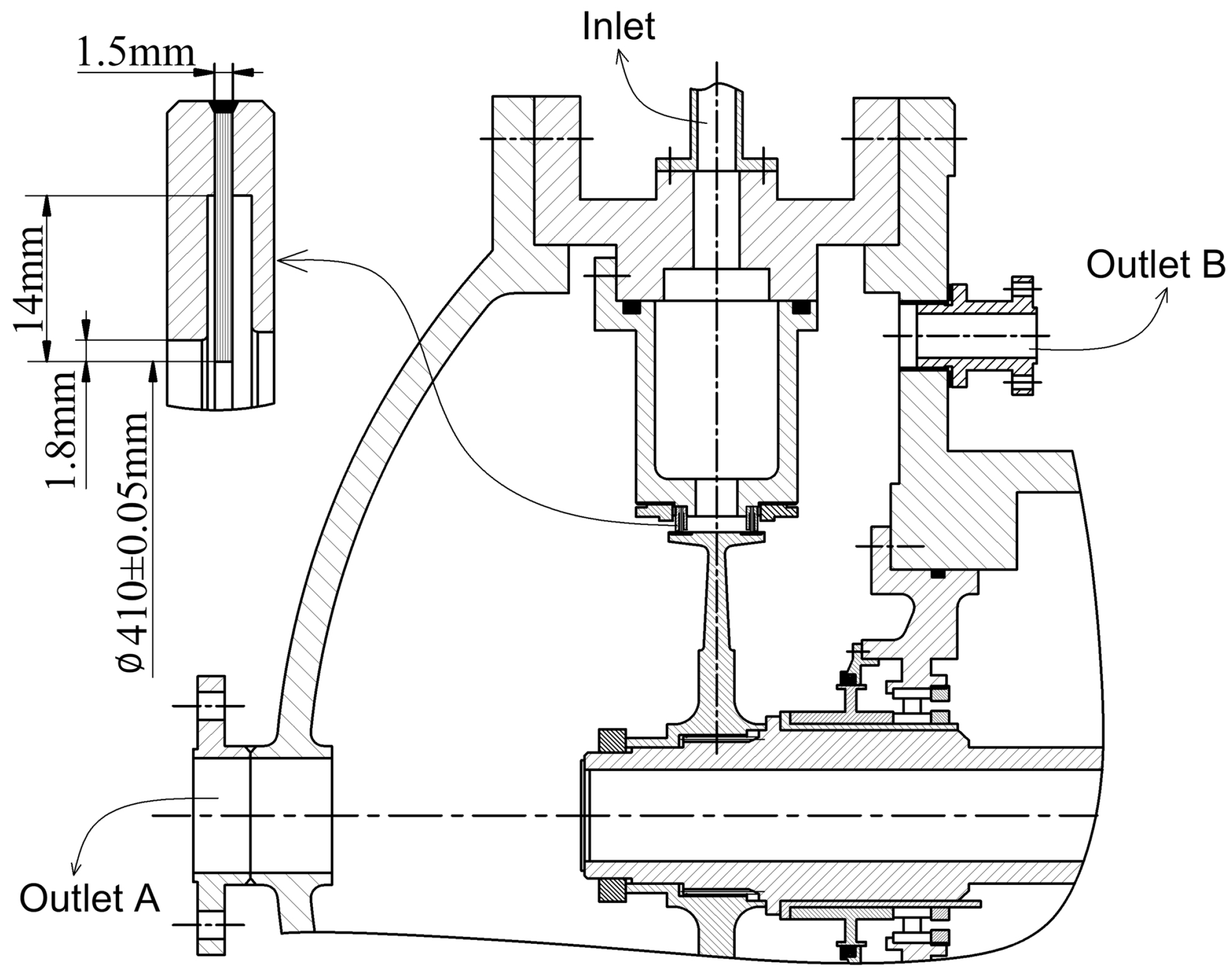





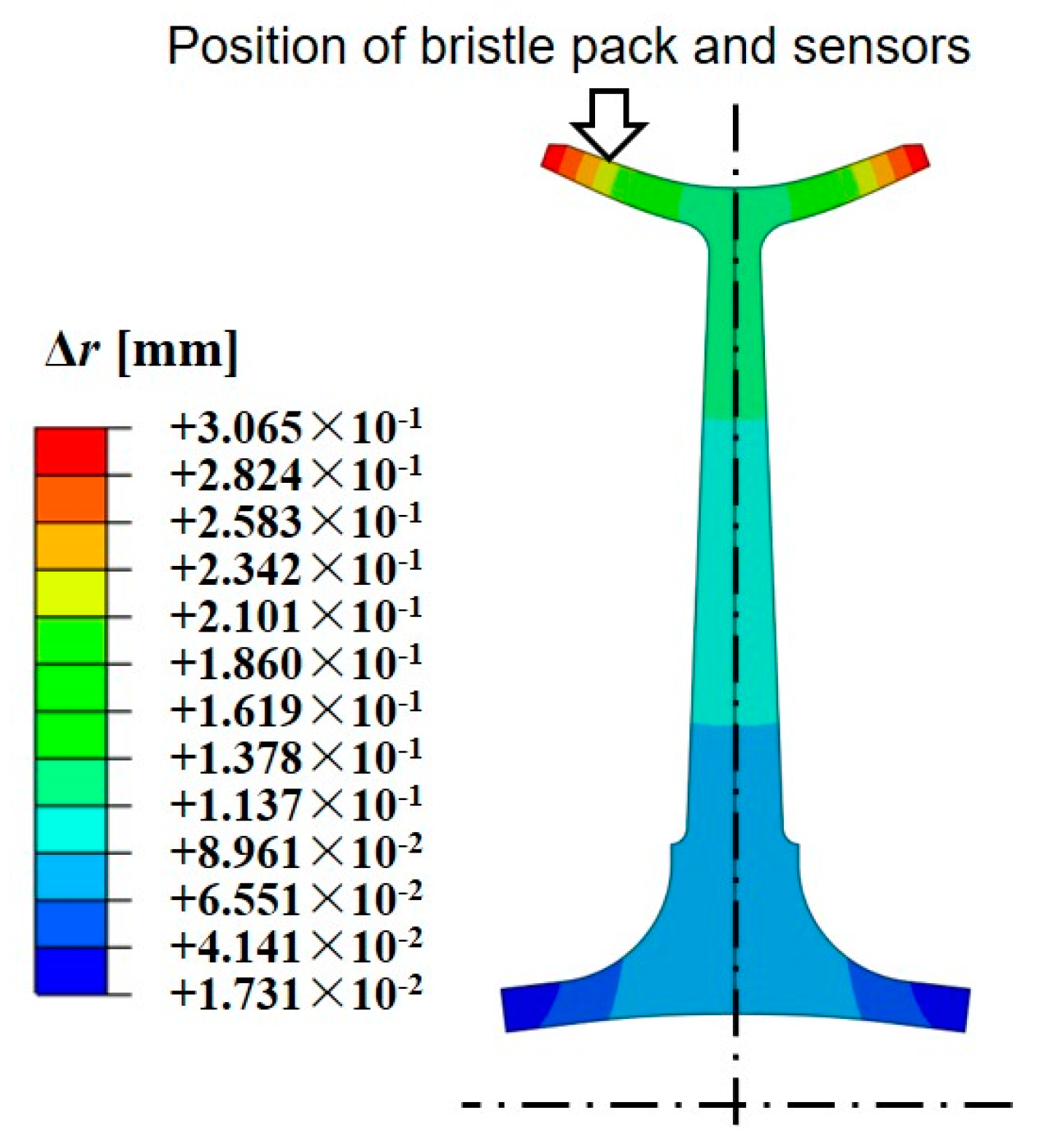
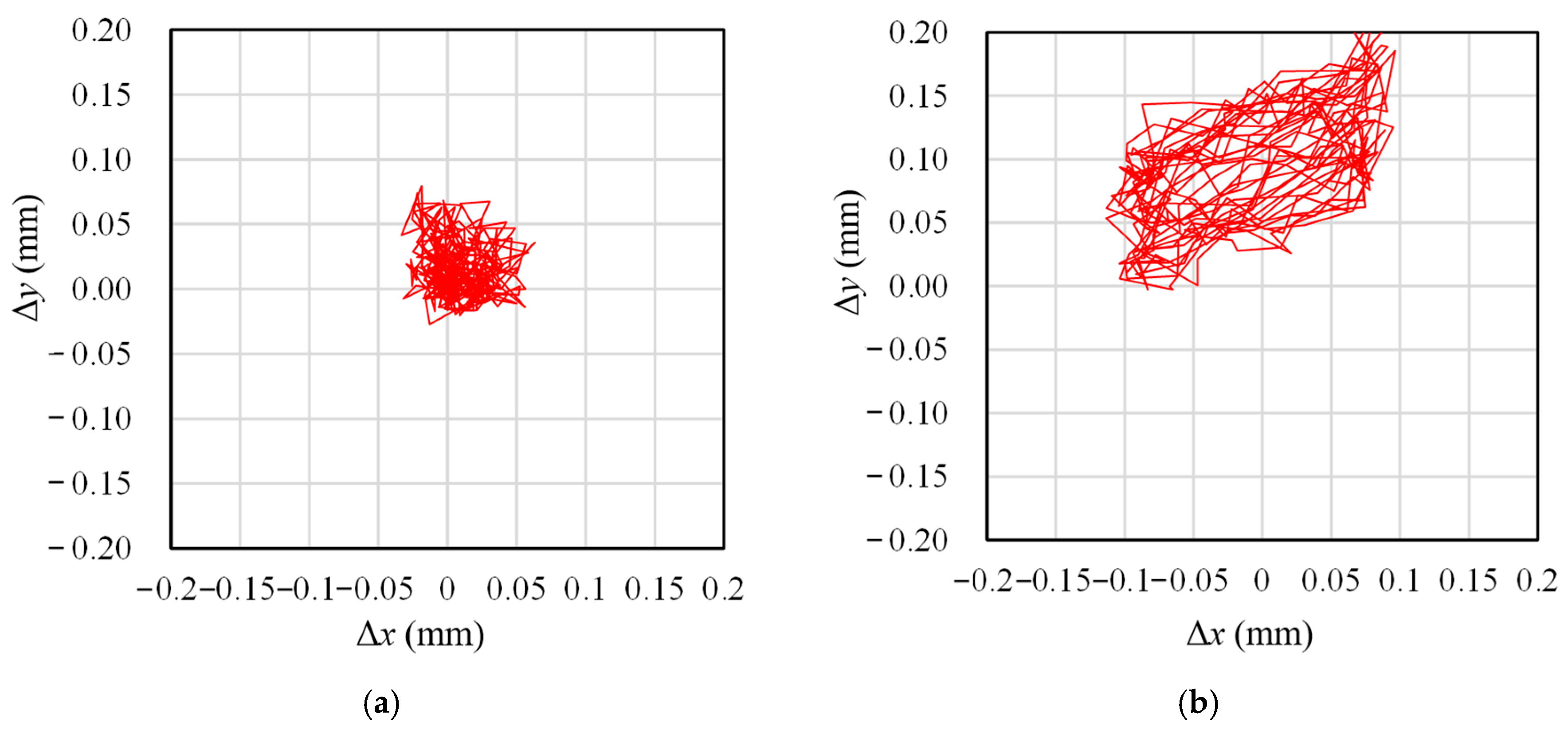



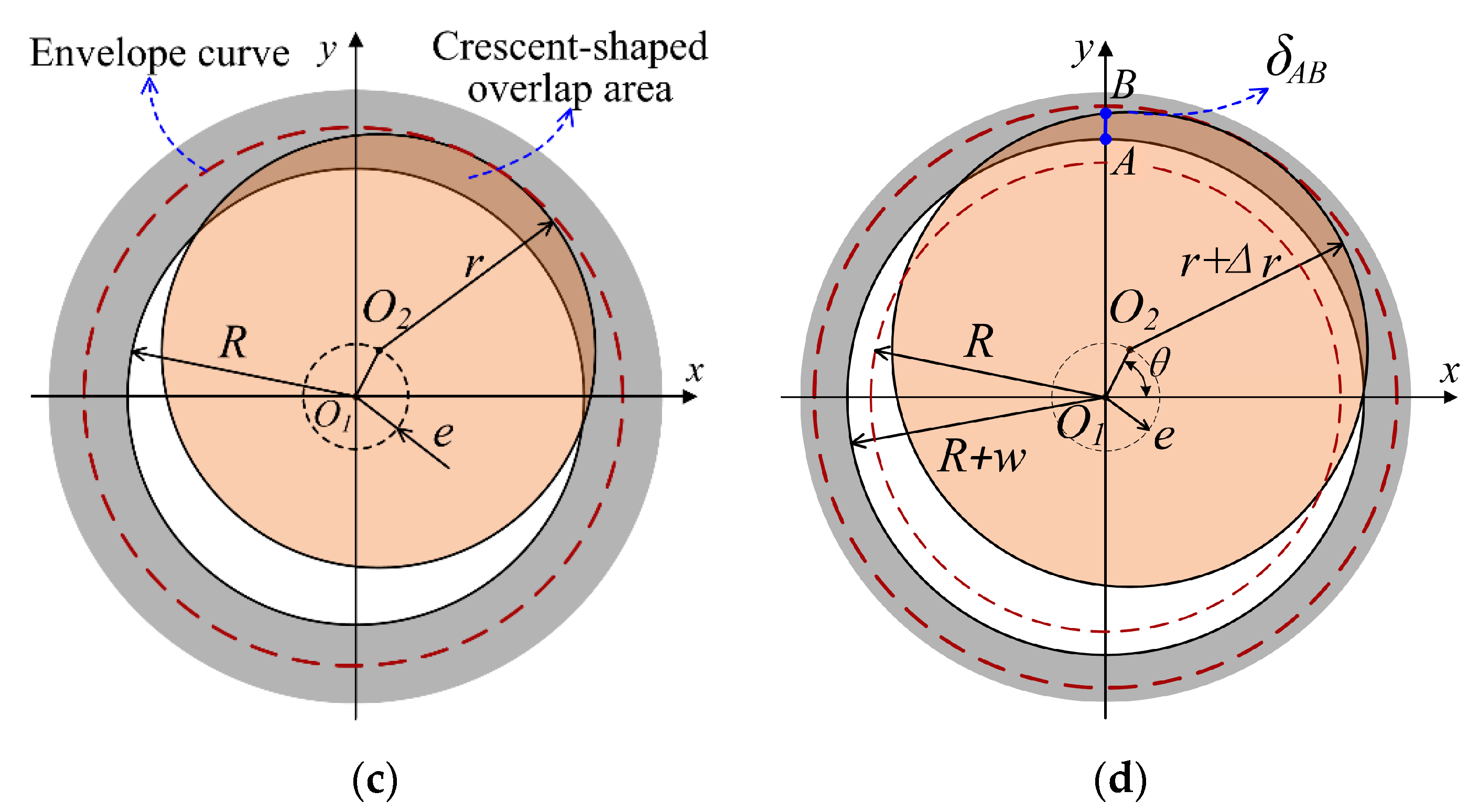


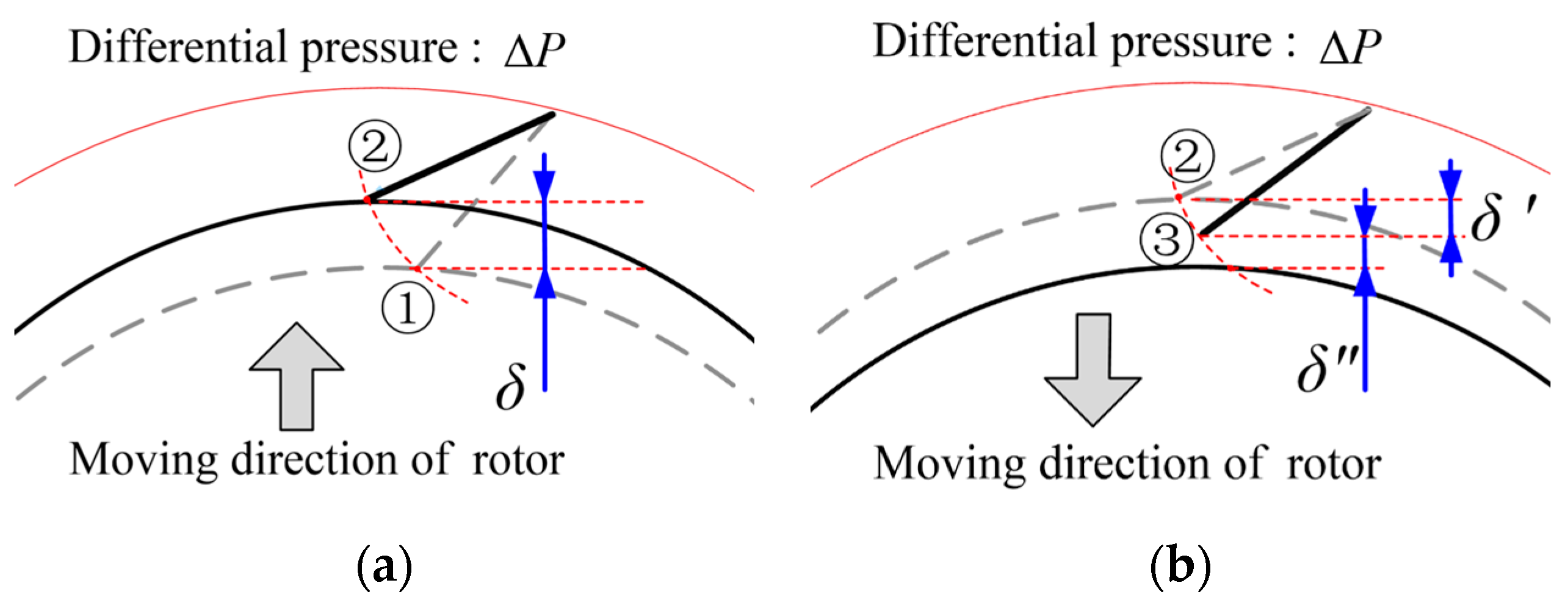

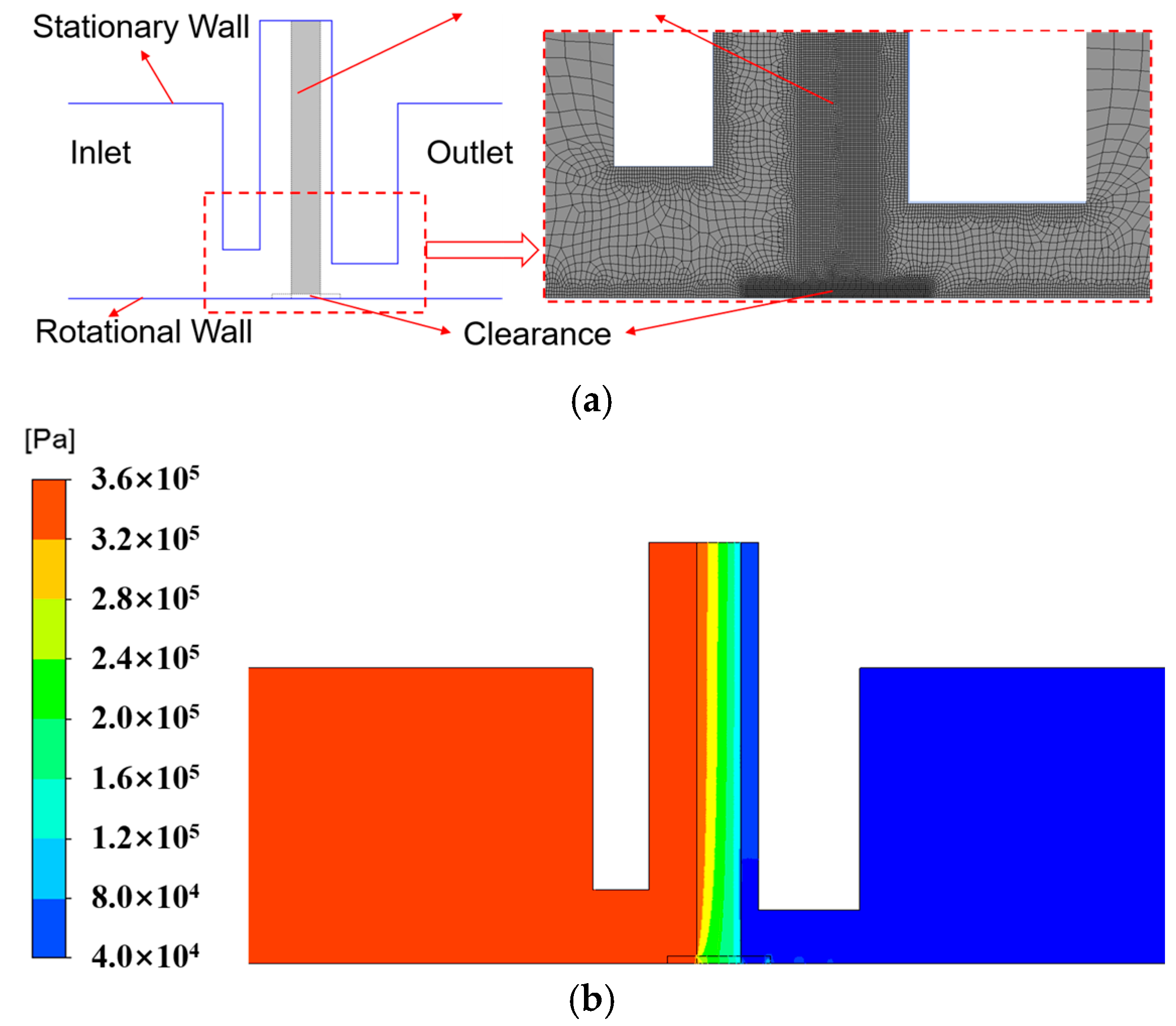



| Geometry Parameters | Design Value |
|---|---|
| Diameter of bristle (mm) | |
| Bristle bore diameter (mm) | |
| Rotor diameter (mm) | |
| Bristle lay angle (°) | |
| Free length of bristle (mm) | 19.8 |
| Radial length of bristle (mm) | 14 |
| Bristle pack thickness (mm) | 1.5 |
| Fence height (mm) | 1.8 |
| Tested Parameters | Measuring Range | Accuracy |
|---|---|---|
| Inlet temperature (°C) | 0~700 | ±3 °C |
| Inlet pressure (kPa) | 0~1000 | 1.5% |
| Outlet pressure (kPa) | 0~250 | 1.5% |
| Volume flow rate (Nm3/h) | 100~2000 | 2.5% |
| Rotating speed (r/min) | 300~13,000 | 1.0% |
| Inlet temperature (°C) | 0~700 | ±3 °C |
| Running Stage | Running Time (h) | (r/min) | (kPa) | (°C) |
|---|---|---|---|---|
| Stage-1 | 1 | 4660 ± 50 | 300 ± 20 | 300 ± 10 |
| Stage-2 | 10 | 4660 ± 50 | 300 ± 20 | 300 ± 10 |
| Stage-3 | 1 | 11,190 ± 50 | 300 ± 20 | 300 ± 10 |
| Stage-4 | 10 | 11,190 ± 50 | 300 ± 20 | 300 ± 10 |
| Measuring Condition | (r/min) | (kPa) | (°C) |
|---|---|---|---|
| A | 0 | 50/100/150/200/250/300 ± 20 | 300 ± 10 |
| B | 4660 ± 50 | 50/100/150/200/250/300 ± 20 | 300 ± 10 |
| C | 11,190 ± 50 | 50/100/150/200/250/300 ± 20 | 300 ± 10 |
| Rotating Speed ω (r/min) | Radius Expansion ∆r (mm) | Eccentric Radius e (mm) |
|---|---|---|
| 4660 | 0.015 | 0.05 |
| 11,190 | 0.241 | 0.1 |
Disclaimer/Publisher’s Note: The statements, opinions and data contained in all publications are solely those of the individual author(s) and contributor(s) and not of MDPI and/or the editor(s). MDPI and/or the editor(s) disclaim responsibility for any injury to people or property resulting from any ideas, methods, instructions or products referred to in the content. |
© 2023 by the authors. Licensee MDPI, Basel, Switzerland. This article is an open access article distributed under the terms and conditions of the Creative Commons Attribution (CC BY) license (https://creativecommons.org/licenses/by/4.0/).
Share and Cite
Xu, Y.; Ma, T.; Kong, L.; Zhao, J.; Li, Y. Wear and Leakage Behaviors of Brush Seal Considering Eccentricity and Radial Deformation. Energies 2023, 16, 3394. https://doi.org/10.3390/en16083394
Xu Y, Ma T, Kong L, Zhao J, Li Y. Wear and Leakage Behaviors of Brush Seal Considering Eccentricity and Radial Deformation. Energies. 2023; 16(8):3394. https://doi.org/10.3390/en16083394
Chicago/Turabian StyleXu, Yiren, Ting Ma, Lingcheng Kong, Juying Zhao, and Yongjian Li. 2023. "Wear and Leakage Behaviors of Brush Seal Considering Eccentricity and Radial Deformation" Energies 16, no. 8: 3394. https://doi.org/10.3390/en16083394






